Air filters are a great way to improve your indoor air quality and reduce the hundreds of chemicals that can be found in your baby’s nursery.
As you prepare your home and nursery for your baby, I want you to think about your indoor air. One of the most commonly overlooked toxins that we don’t think twice about is the air quality inside our homes. You might be surprised to learn that indoor air can be five times more polluted than outdoor air.
Think about it: An average person breathes up to 25,000 breaths per day! The quality of the air we breathe should be something we recognize as a potential threat to our health, but something that we can improve. Of course, we can’t completely control the outdoor air quality that we are exposed to, but our indoor air quality can be improved.
You might think your air quality is quite good, especially if you open your windows often, but when you think about it, everything inside our homes is just about as unnatural as you can get—from synthetic housing materials to off-gassing furniture, and cleaning solvents—all of these things circulate in our air and expose us to pollutants.
Key Takeaways
- Indoor air quality can be as much as 5x more polluted than outdoor air.
- HEPA filters out particulate matter, while activated carbon absorbs VOCs and gasses. Ideally, you want a multi-stage filter that combines the two.
- Regularly air out your home by opening the windows and allowing the air to circulate.
- Our top recommended air filter brands are Austin Air, AirDoctor, and IQAir.
Common Sources of Indoor Air Pollution
A few common sources that release toxins into your indoor air include:
- Tobacco Smoke (including secondhand smoke)
- Personal care products
- Cleaning products
- Burned incense and candles
- Gas ranges
- Cooking
- Mopping
- Water-damaged materials
- Furniture (especially with pressed wood)
- New building materials
- Paint
The EPA identifies the following as dangerous pollutants to our indoor air quality:
- Asbestos (common in homes built before 1980)
- Biological pollutants (dust mites, cockroaches, bacteria, viruses)
- Carbon Monoxide (CO)
- Formaldehyde
- Lead (common in homes built before 1978)
- Nitrogen Dioxide (improperly installed or unvented indoor gas appliances)
- Pesticides
- Radon (Rn)
- Mold
Common Health Effects of Indoor Air Pollution
The Environmental Protection Agency (EPA) says that these pollutants can cause health issues such as:
- Fatigue
- Dizziness
- Headaches
- Irritation of the eyes, nose, and throat
- increased risk of respiratory infections
The EPA states that air pollution exposure “has been associated with a wide range of human health effects including increased respiratory symptoms, hospitalization for heart or lung diseases, and even premature death. Hazardous (or toxic) air pollutants may cause cancer or other serious health effects, such as reproductive effects or birth defects.” And of course, pollutants impact our most vulnerable populations: children and the elderly.
Why You Need an Air Filter
Even if you try several natural ways to improve air quality, I still recommend having a good air filter. Natural methods of air filtering only remove so much, and it doesn’t remove the extremely tiny particles under 2.5 microns. Using an air filter in your bedroom or nursery can reduce exposure to toxins up to 50%.
What to Look for in an Air Filter
An air filter is an investment, so making the right choice for your home is important. There are a few features to consider:
Size. Larger rooms require a higher-capacity air purifier. You can determine the capacity by looking at the clean air delivery rate, the CADR, which shows how many particles are filtered out and how fast. To pick the right one for your room, choose a CADR rating that is at least two-thirds the size of your room. For example, a 100-square-foot room needs a CADR rating of at least 67.
Efficiency. Filters clean at different rates over the course of its running time. You can determine the air change per hour, called the ACH rate. It varies from 2 to 6. An ACH rate of 2 means the air is cleaned every 30 minutes.
Filter Type. There are three main types of filters you’ll find on the market. Aside from the type of filter you pick, you also want to look at washable filters versus disposable filters. Washable filters are more cost-efficient and environmentally friendly because you don’t have to replace them all the time. However, they do tend to be a higher upfront cost.
- HEPA. HEPA filters are considered the gold standard for air filters and are the most effective at eliminating common allergies in the air, such as pet dander, pollen, and dust. These filters can remove up to 99.97% of the particles in the air. Basically, as the air flows through the filter, the filter intercepts the particles.
- Carbon. Carbon filters remove irritants in the air by absorption. If you have moved into a new home, have bought a lot of new furniture, or live in an area that gets wildfires or has other air quality issues, you’ll want a carbon filter.
- Charcoal. Just like carbon filters, charcoal air filters remove irritants in the air, such as smoke and cooking odors.
- Ion Generator or Ionizer. This feature isn’t in all of the filters, but it’s a nice feature that many people like. The ion generator is a technology that sends negative ions into the air to help clean it. Since dust particles, bacteria, and allergens are positively charged, the negative ions bond with them. This bonding causes the contaminants to become too heavy to stay in the air. You should note that some ionizers emit ozone, which some studies have found can cause irritation to your lungs and increase asthma symptoms, so it’s not for everyone.
- Germ Control. HEPA filters do remove most bacteria from the air, but viruses are often too small for a normal HEPA filter to catch. If this is a priority, be sure to get an Austin Air, IQAir, or AirDoctor.
REVIEWS: What Are the Best HEPA and Carbon Air Filters?
There are many air filters on the market today, so it can be hard to determine which ones are effective. So, I’ve rounded up a few of my favorites to share with you! These models contain advanced HEPA air filtration combined with carbon to maximize their air filtration output.

1) Austin Air Filters
Save on your purchase of Austin Air
As an authorized Austin Air dealer, we can offer you a pretty nice deal on your purchase of Austin Air. But, we can’t publicly advertise the offer so please request a discount code through this form. It will automatically be emailed to you.
Austin Air Filters are high-quality, durable, and recommended by many allergists. These filters combine several filtering methods, including activated carbon, zeolite (an absorbent mineral), and HEPA technology.
One other noteworthy perk is that their filters are able to remove particles as small as 0.1 microns.
Another perk of Austin Air Filters is that you only have to replace these filters every five years, which is a good thing since their replacement filters cost several hundred dollars. Combined with the cost of the machine, which is anywhere from$500-$900, you invest quite a bit of money into this air filter, but it is truly worth it!
There are several models of Austin Air filters, and here are our top recommendations and best-sellers:
- Austin Air: The Bedroom Machine: The Bedroom Machine is great for those who have trouble sleeping due to allergies, asthma, or lung diseases. It helps to reduce snoring, support the immune system, and reduce coughing and sneezing. This 5-stage filtration system moves clean air faster and more efficiently than other models. It uses medical-grade HEPA and military-grade carbon cloth.
- Austin Air: Healthmate Plus: The Healthmate Plus is like the big brother to the Healthmate Junior Plus listed above. This air filter filters smoke, VOCs, and formaldehyde. Using the Healthmate Plus can help reduce coughing and sneezing, boost the immune system, reduce snoring, and help you sleep properly. It uses a 4-stage filtration system that utilizes both activated carbon and medical-grade HEPA.
- Austin Air: Healthmate Junior Plus (currently unavailable): Designed for smaller rooms, this filter removes formaldehyde and other dangerous VOCs. The Healthmate Junior can help to ease headaches and reduce nausea caused by chemicals in the air. The filter uses a 4-stage filtration system with activated carbon and medical-grade HEPA filters. And these are designed to last five years.
For a more detailed breakdown, see our full Austin Air review.
2) AirDoctor
Save on your purchase of AirDoctor
Discount alert! Save up to $300 on your AirDoctor purchase by shopping with AirDoctor through our affiliate link.
s
AirDoctor is a newer brand of air filters that combines true HEPA air filtration with air-quality monitoring technology. If you like tech and pretty things, AirDoctor is a great choice for you.
The one big advantage of AirDoctor is that they have a lower price point than the other top-recommended filters on this list. This air filter combines the UltraHEPA filter with a dual action Carbon/Gas/VOC filter that removes almost all the particles, toxic ozone, VOCs, and gases from your home. It is a sealed system that can remove ultra-fine particles as small as .1 microns.
You’ll love that the AirDoctor features WhisperJet fans which are quieter than most air filters. It also has a built-in air quality monitor, so you don’t have to purchase one separately. The manufacturer recommends changing your filters every year.
- AirDoctor 5000: The 5000 is AirDoctor’s powerhouse model, comparable with the world’s best air filtration units. It has double the air filtration capacity of the other units (2 pre-filters, 2 carbon filters, and 2 UltraHEPA filters vs. 1 of each in the others).
- AirDoctor 3000: The flagship model, AirDoctor 3000 is perfect for spaces 505-1,262 sq. feet in size. If you aren’t sure which model to buy, start with the original 3000 model.
- AirDoctor 2000: A mid-sized unit, the AirDoctor 2000 is a bit smaller than the 3000 and similar to the 1000. It’s a bit of a tweener, and you can use this for spaces between 305-600 sq. feet.
- AirDoctor 1000: A compact AirDoctor that’s best for smaller spaces around 235 sq. feet (but works in rooms up to 589 sq. feet).
For detailed information and a more in-depth comparison of AirDoctor models, check out our full AirDoctor Review.
3) IQAir
Allergists and doctors recommend IQAir filters due to their ability to distribute medical-grade purified air. In fact, their air filters have been used in hospitals across Asia to help reduce the spread of airborne viruses.
HealthPRO Series
IQAir has a new HealthPRO Series that sends out 25% cleaner other than their previous models. It’s also 32% quieter with a filter that lasts longer. IQAir also provides a 10-year warranty which is nice to have and offers reassurance that this filter will be with you for the long haul.
The HealthPRO Series helps to remove 99.97% of pollutants in the air, such as VOCs and ultra-fine particles. It distributes medical-grade air without creating ions, which asthmatics can struggle to process. You can set the speed on anything between 2 and 6. If you set it to a speed of 6, the delivery rate is 300 cubic feet per minute. The unit’s maximum coverage area is 1,125 square feet!
IQAir costs around $800 and the manufacturer recommends that you change your filter every four years. Aside from the size of the unit, which is on the larger side, you’re sure to see the health results of this air filter.
4) Rabbit Air
Rabbit Air filters use a pre-filter, a charcoal filter, a HEPA filter, and negative ions to purify the air in stages. Best of all, their filters never go higher that 51.3 dBA (decibels) so they are not noisy.
The Rabbit Air MinusA2 is a unique choice because it can be mounted on a wall and display art from artists like Monet and Van Gogh. The MinusA2 works as a germ defense filter, trapping and reducing airborne bacteria. It also filters out pet dander, allergens, VOCs, and odors from cigarettes, cigars, and cooking.
The MinusA2 filters the air in an 815 square foot room twice an hour on the highest setting with a CADR of 200 pollen, 193 dust, and 180 smoke. It’s ultra quiet, operating at five speeds ranging from 20.8 to 45.6dBA.
I love that the MinusA2 uses a six-stage filtration system. These filters last around two years.
Give Rabbit Air MinuseA2 a try!
Carbonless Air Filters
If our top picks are out of budget, or you want a carbon-free air filter, you can still get a HEPA air filter, but the capabilities won’t be as powerful as the brands listed above. Here are our picks for the best air filters on a budget!
EnviroKlenz
The EnviroKlenz Mobile Air System uses hospital-grade technology to clean the air in your home. To start off, the Mobile Air System uses certified HEPA filtration and a mineral-based air cartridge that removes and neutralizes VOCs, fragrances, and odors.
This unit covers up to 1,000 square feet and offers several speeds. What’s nice is even on the highest setting, you never have to worry about the noise disrupting you. The Mobile Air uses four speeds and has a CFM rating of 85 to 250, depending on the speed you pick.
You will need to replace the filters in the Mobile Air every 4-5 months.
Germ Guardian
If you want a budget-friendly air filter that also fights off germs and viruses, look no further than Germ Guardian. Their products help to remove odors, dust mites, mold spores, pollen, pet dander, and more. They use HEPA filters to capture small particles, while the UV technology kills off any airborne bacteria that might threaten your home.

GermGuardian AC4825
This air filter is great small rooms up to 167 square feet and works well for allergies. The HEPA filter captures 99.97% of dust and allergies as small as .3 microns. It combats smoke odor with a charcoal filter that also reduces pet odor, cooking smells, and wildfire smoke. This filter comes with an optional UV-light technology that helps to get rid of viruses and mold spores.
Make sure that you replace the filter every 6-8 months for optimal results.
Honeywell
Honeywell is an innovative company that creates air purifiers, dehumidifiers, humidifiers, and more. These filters are less expensive than many other brands I’ve listed. And they have two air filters I recommend.
Honeywell True HEPA Allergen Remover
The True HEPA Allergen Remover works for rooms up to 465 sq. ft, capturing up to 99.97% of the particles in the air like pet dander, pollen, and smoke. This filter uses certified HEPA filters to remove allergens and dust, and the carbon pre-filter absorbs VOCs and other odors. It’s designed to circulate air five times per hour. One of my favorite features is that you can use the automatic shut-off time with 2, 4, and 8-hour intervals.
You should plan to replace the pre-filter every three months and replace the HEPA filter once per year. The cost for the replacement filters is around $40 for a combination pack, which is pretty inexpensive compared to some of the other brands. While not completely inexpensive at $250, the entire unit is costs less than others that perform similarly.
Honeywell Kaz DH-HPA060
If you need an air filter for small rooms, around 75 square feet, the Kaz helps to capture 99.97% of airborne particles. It can capture pet dander, pollen, mold, smoke, and dust. This air filter uses a pre-filter made of activated carbon to absorb VOCs, gases, and odors. The next filter is made with HEPA that captures 99.97% of the particles.
Honeywell created the Kaz to circulate the air in the room 5 times an hour. While you should change the pre-filter every three months and the HEPA filter once per year, the entire unit is pretty inexpensive at $90, and the replacement filters are $20.
Do You need an Air Quality Monitor?
Air quality monitors detect chemicals in our home air and can help identify which pollutants are in your air. A few things that air quality monitors measure include:
- Temperature & humidity: Dampness in your home can increase humidity, mold, and mildew growth— all of which can lead to respiratory health issues such as asthma.
- Particle Matter: Ideally, you want to look for particle matter 2.5 microns and below. This is small dust that can enter our bloodstream via inhalation. The World Health Organization lists PM2.5 as our biggest environmental health issue. [6]
- Carbon Monoxide: Carbon monoxide is an odorless, colorless gas that is fatal at higher concentrations by causing asphyxiation, and low levels of CO can cause depression, confusion, and memory loss. Many homes already have carbon monoxide alarms, but they don’t often detect CO at low levels, which is where an air quality monitor would be helpful.
- VOCs: Volatile organic compounds are prevalent in homes and are often carried in new furniture, carpeting, paint, and cleaners. Chances are if you smell something that has a chemical-like odor, it is a VOC. VOCs can cause irritation of the eyes, nose, and throat, along with headaches, nausea, and other health problems.
If you want to try an air quality monitor, check out AirVisual, the Air Quality Monitor series from IQAir. Their monitors can detect chemicals, PM 1, PM 2.5, PM 10, CO2, AQI, temperature, humidity, and air pressure.
Final Thoughts
While an air filter may be expensive, consider it an investment in your family’s health and wellbeing. Breathe easy by using an air filter in your home to support your health and nontoxic living.
Do you use an air filter? Which one has worked well for you?
If you found this guide to high-quality air filters helpful, pin this post for later!




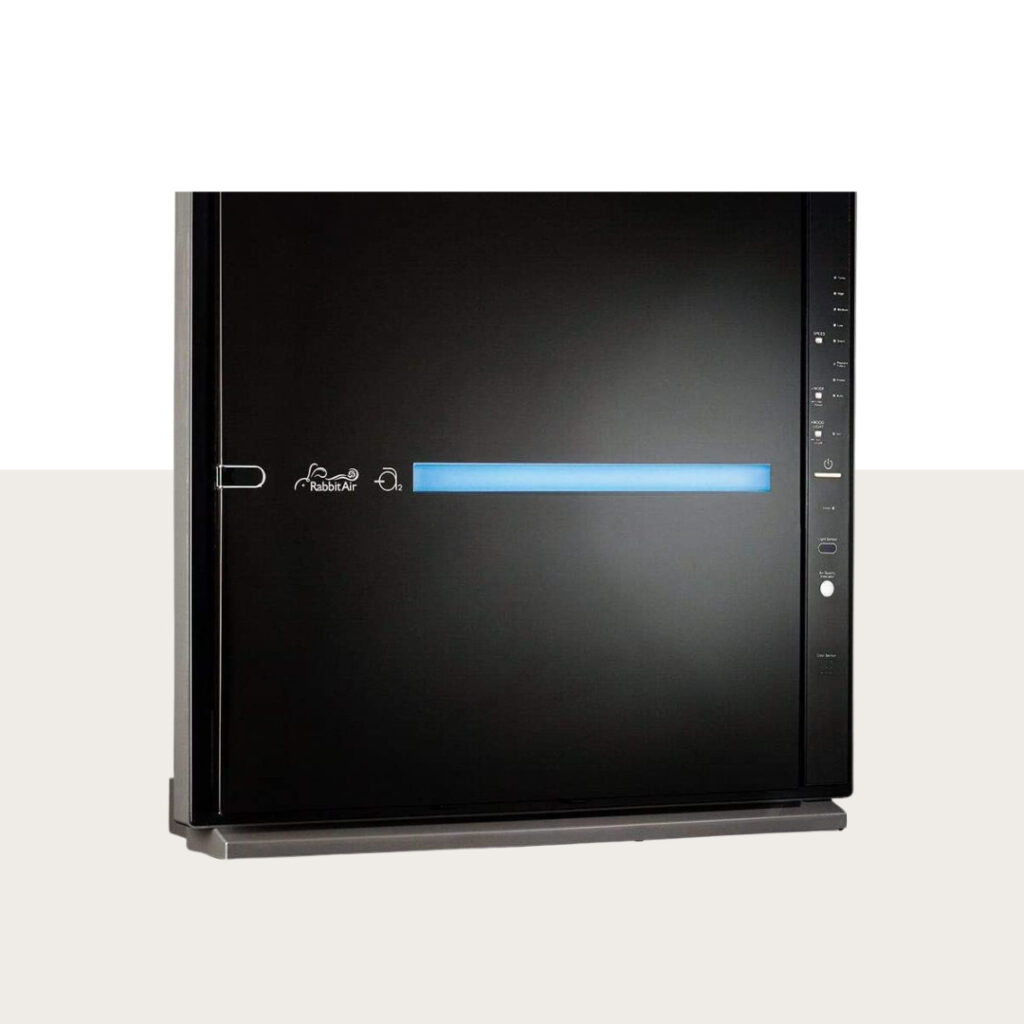




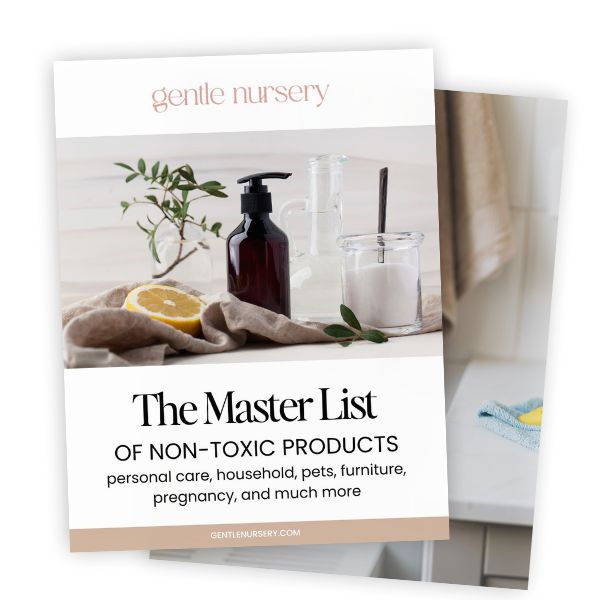
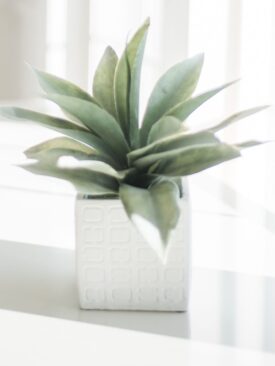

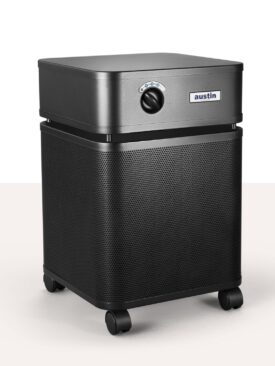
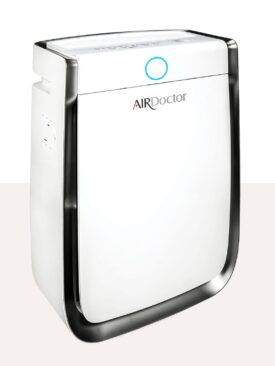



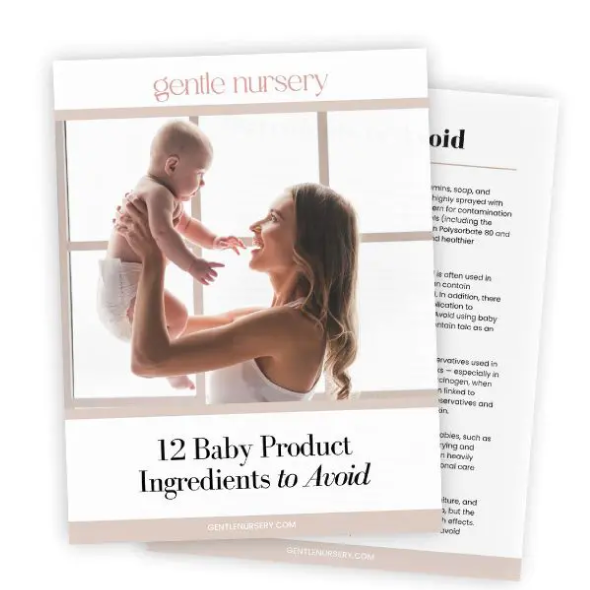
Leave a Reply